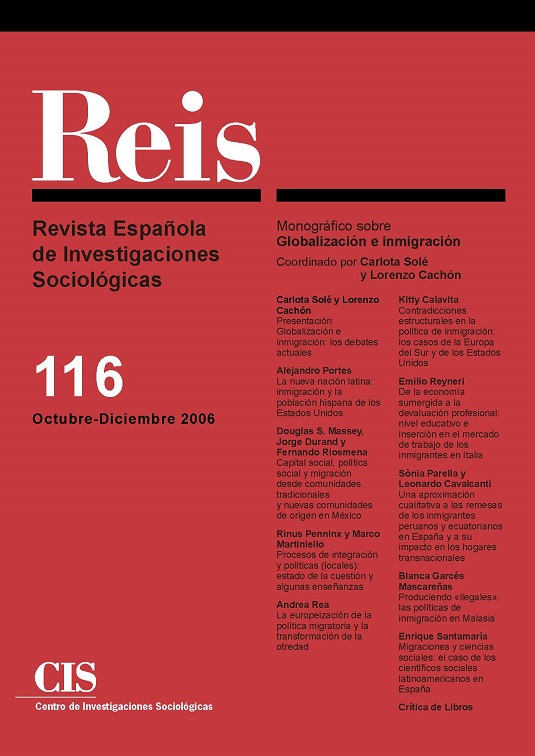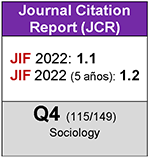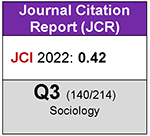The new latin nation:immigration and the hispanic population of the United States
DOI:
https://doi.org/10.5477/cis/reis.116.55Keywords:
Immigrants, Labour Migration, Transnationalization, Acculturation, Social Integration, United States, Latin Americans, Mexico, Central AmericaAbstract
This paper presents some statistical data on the Hispanic population in the United States and its growth, caused by a sustained immigrant influx. The paper develops the following points:1) the importance and relevance of the Hispanic population in the United States; 2) the role of Mexican and Central American migration as the main sources of manual labor for the American economy; 3) the importance of migrants in the regional and national development in the countries of origin; 4) the situation and perspectives of the second generation; 5) the long-term integration of the Latin American immigrant population in the United States. The supporting arguments of recent essays criticizing the presence of the Hispanic population in the United States are examined as being a threat to English dominance and a factor for cultural disintegration.
Downloads
Downloads
Published
How to Cite
Issue
Section
License
Copyright (c) 2024 Revista Española de Investigaciones Sociológicas

This work is licensed under a Creative Commons Attribution-ShareAlike 4.0 International License.
Permite Compartir — copiar y redistribuir el material en cualquier medio o formato, Adaptar — remezclar, transformar y construir a partir del material para cualquier propósito, incluso comercialmente.








